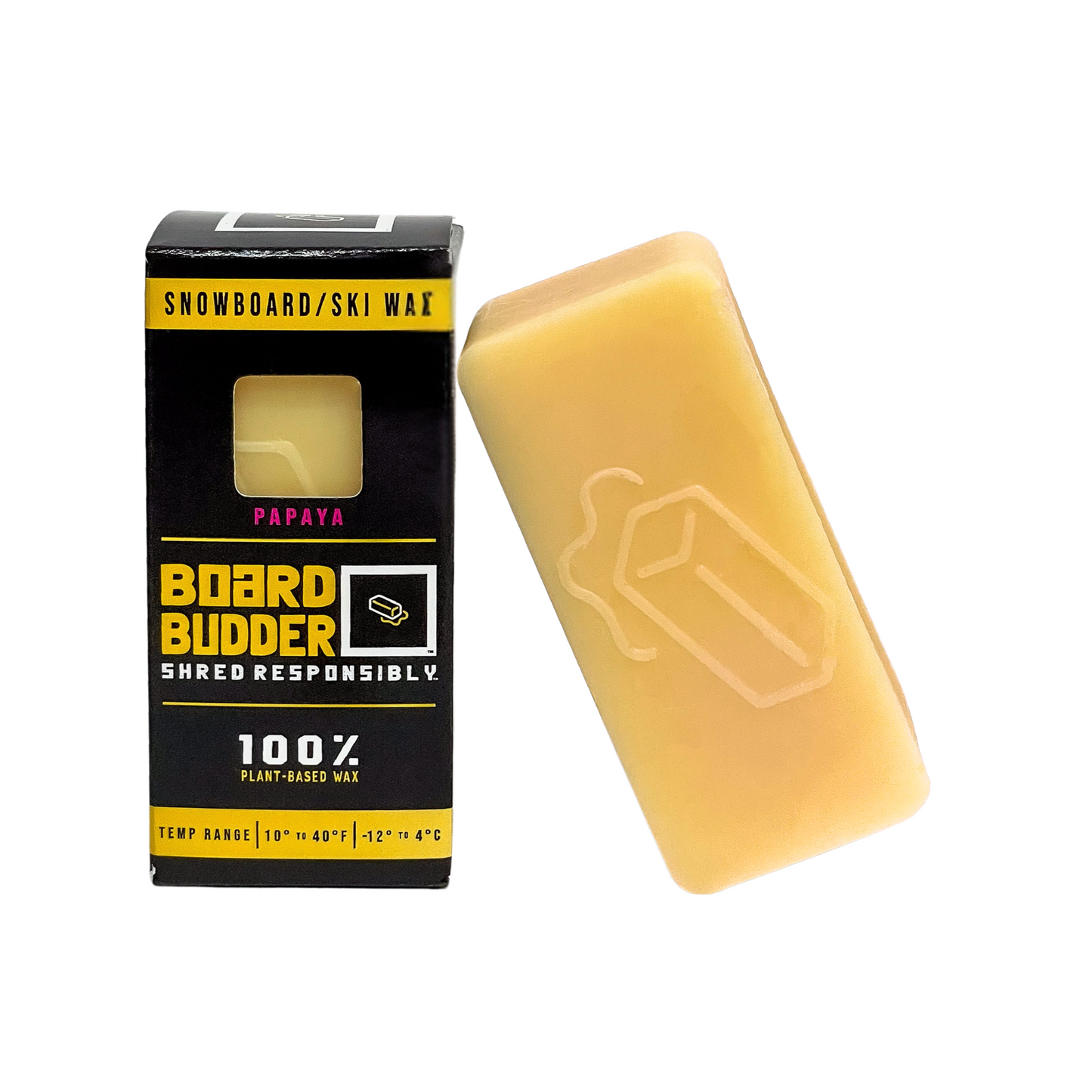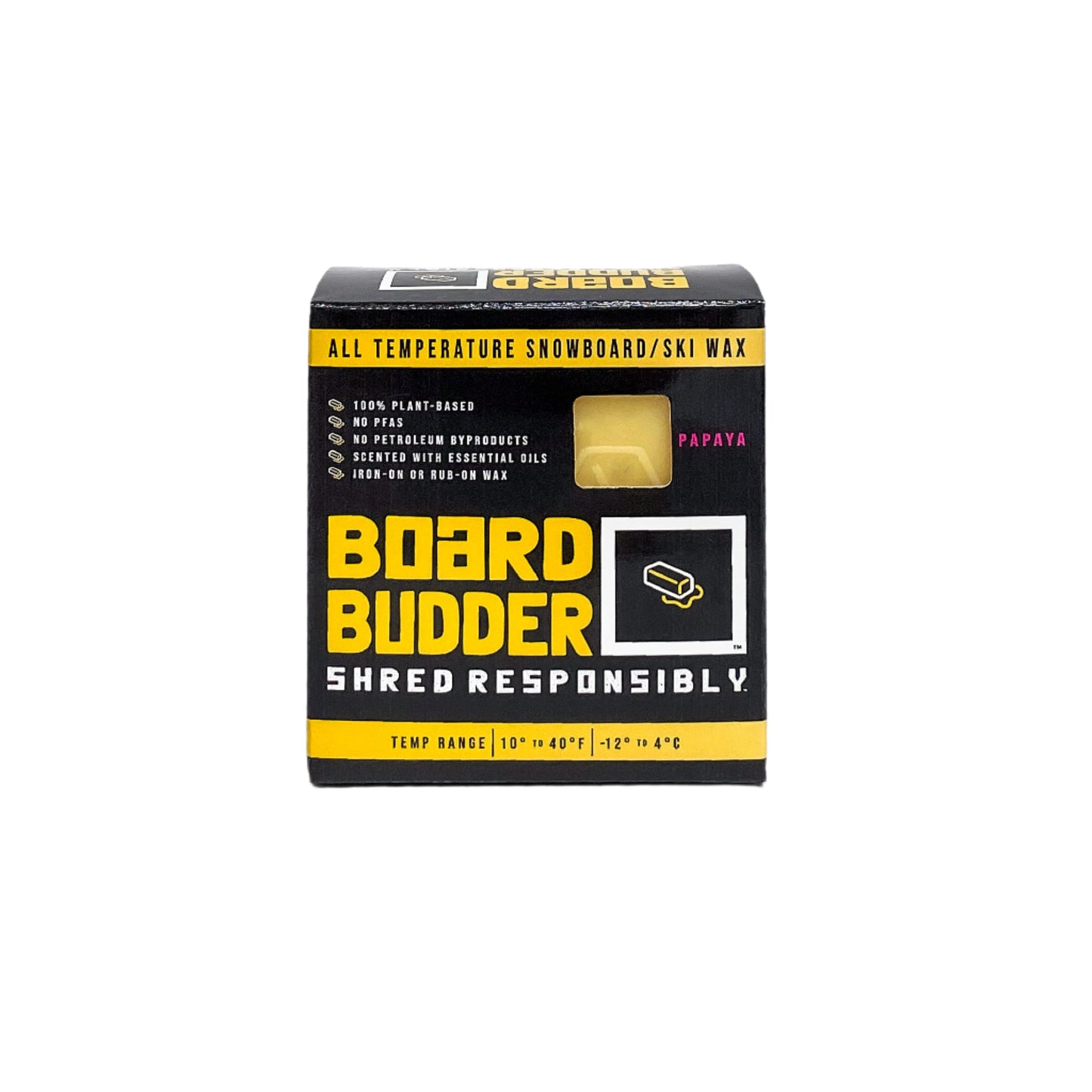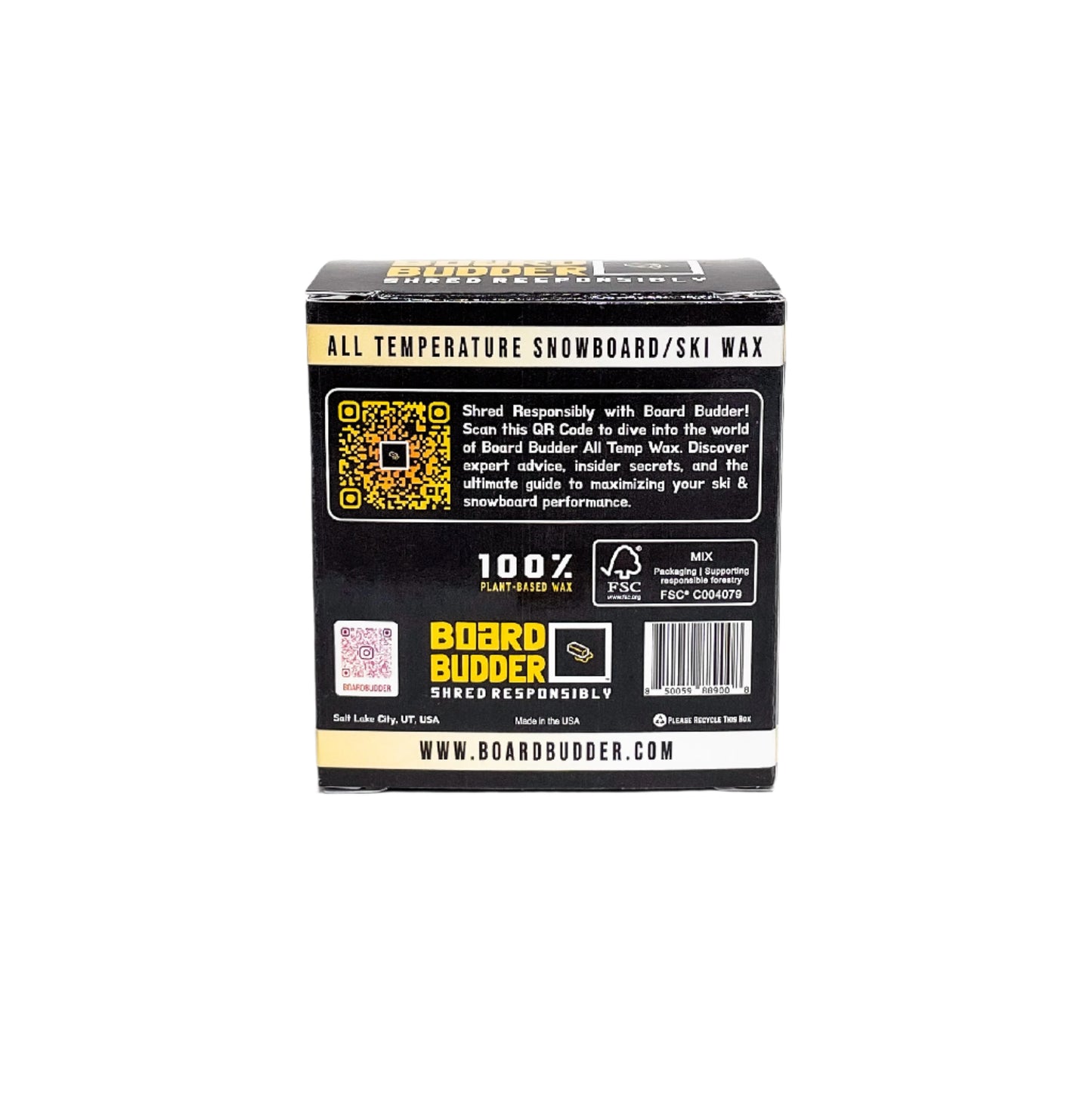5 Reasons to Avoid Paraffin and PFAS in Ski Wax
Share
Understanding the Environmental and Health Impacts of Ski Wax Ingredients
At Board Budder, we’re committed to providing eco-friendly ski wax alternatives. In this post, we explore why we avoid using PFAS (Per- and Polyfluoroalkyl Substances) and paraffin in our wax. PFAS are toxic chemicals that do not biodegrade, accumulating in the environment and posing significant health risks. Similarly, paraffin, a byproduct of petroleum refining, is not biodegradable, making it harmful to ecosystems. We believe in the importance of using sustainable, non-toxic materials to protect both the environment and your health. Continue reading to learn more about the five key reasons why we choose to avoid PFAS and paraffin in our ski wax, and how our environmentally responsible alternatives help you shred responsibly.
INTRODUCTION TO SKI WAX INGREDIENTS
Common Ingredients and Their Purpose
Ski wax is crucial for enhancing the performance and lifespan of skis. It typically contains a mix of hydrocarbons, fluorocarbons, and other additives designed to reduce friction and protect the ski base. The most common ingredients in ski wax are:
- Paraffin wax: A hydrocarbon-based compound that provides a smooth glide and protection against snow and ice.
- Fluorocarbons (PFAS): Used for their water-repellent properties, making them ideal for reducing friction in wet snow conditions.
- Other additives: Including molybdenum, graphite, and silicon, to improve glide, durability, and wax adherence to the ski base.
Ski wax enhances ski performance and longevity, with key ingredients like paraffin wax for smooth gliding and PFAS for water repellency. However, these substances, especially PFAS, pose significant environmental and health risks.
PFAS IN SKI WAXES
1. Environmental Impact
- PFAS are persistent environmental pollutants found in ski waxes, leading to significant contamination of snow, soil, and water sources, as highlighted by high PFAS levels at ski race sites(Carlson & Tupper, 2020).
- These chemicals are known for their resistance to degradation, contributing to long-lasting environmental harm.
2. Health Concerns
- Professional ski waxers are exposed to high concentrations of PFAS, posing potential health risks such as hormonal disruptions and increased cancer risk (Nilsson et al., 2013).
- PFAS exposure is linked to various health issues, including developmental delays in children, decreased fertility, and immune system impacts. These concerns are supported by research that has shown the potential risks of PFAS to reproductive and children's health, where exposure may affect growth, learning, and behavior of infants and older children, lower a woman's chance of getting pregnant, affect the immune system, and induce vaccine-reduced immune protection in children (Anderko & Pennea, 2020).
PARAFFIN WAX
3. Sustainability Challenges
- Paraffin wax, derived from petroleum, contributes to resource depletion and environmental pollution due to its non-renewable nature and the greenhouse gases emitted during production.
- The transition to bio-based waxes offers a sustainable alternative, reducing the environmental footprint associated with ski wax use (Fei & Wang, 2017).
4. Health Risks
- Burning paraffin wax releases harmful compounds, including VOCs and ultrafine particles, which pose health risks, especially to individuals frequently exposed to ski wax fumes, such as waxers and technicians (Bracco & Favre, 1998).
- Long-term exposure can lead to respiratory problems and other health concerns.
|
Compound |
Purpose in Ski Wax |
Environmental Concerns |
Health Concerns |
|
PFAS (e.g., PFOA, PFOS) |
Enhance glide and water repellency |
Persistent, bioaccumulative, and toxic; contaminate water sources and soil; linked to environmental degradation |
Linked to developmental, immune, metabolic, and endocrine health risks; associated with increased cholesterol levels, cancer risk, and other health problems |
|
Paraffin Wax |
Provide smooth glide and protect ski base |
Derived from non-renewable petroleum; contributes to greenhouse gas emissions and pollution |
Fumes can release volatile organic compounds (VOCs) and ultrafine particles, leading to respiratory problems and other health risks |
PFAS Contamination in the U.S. (February 5, 2024)
5. COMMITMENT TO SUSTAINABILITY
BOARD BUDDER'S APPROACH
At Board Budder, we vow to the vitality of our customers and the planet. We persistently explore and embrace sustainable methods to reduce the ecological footprint of our products. Our commitment to eco-friendly materials mirrors our duty to propel a sustainable future for the ski industry. That is why we understand the importance of developing sustainable, biodegradable ski & snowboard wax without trade-offs in performance.

REFERENCES
- Carlson, G., & Tupper, S. (2020). Ski wax use contributes to environmental contamination by per- and polyfluoroalkyl substances.. Chemosphere, 261, 128078 . https://doi.org/10.1016/j.chemosphere.2020.128078.
- Nilsson, H., Kärrman, A., Rotander, A., Bavel, B., Lindström, G., & Westberg, H. (2013). Professional ski waxers' exposure to PFAS and aerosol concentrations in gas phase and different particle size fractions.. Environmental science. Processes & impacts, 15 4, 814-22 . https://doi.org/10.1039/c3em30739e.
- Anderko, L., & Pennea, E. (2020). Exposures to per-and polyfluoroalkyl substances (PFAS): Potential risks to reproductive and children's health. Current problems in pediatric and adolescent health care, 50(2), 100760. https://doi.org/10.1016/j.cppeds.2020.100760
- Fei, T., & Wang, T. (2017). A review of recent development of sustainable waxes derived from vegetable oils. Current opinion in food science, 16, 7-14. https://doi.org/10.1016/J.COFS.2017.06.006.
- Bracco, D., & Favre, J. B. (1998). Pulmonary injury after ski wax inhalation exposure. Annals of emergency medicine, 32(5), 616–619. https://pubmed.ncbi.nlm.nih.gov/9795328/
-
https://www.ewg.org/interactive-maps/pfas_contamination/map/









